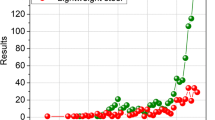Conclusions
-
1.
The preferential texture of steel affects the value of the plastic anisotropy of steel Kh17 and also its ability to be elongated. The texture of a “cube on an angle” {111} is the most conducive for elongating sheet steel Kh17.
-
2.
With a definite degree of compression on cold rolling, the steels can obtain the necessary crystalline orientation, and, at the same time, the necessary plastic anisotropy.
-
3.
The mechanical properties of steel Kh17 alone cannot characterize its ability to be elongated, since steel with the worse characteristics of plasticity, but with a large anisotropy of plasticity, is most susceptible to elongation.
-
4.
The largest anisotropies of plasticity and the best characteristics on elongating steel Kh17 are found at degrees of deformation of 70%.
Similar content being viewed by others
Literature cited
W. Truskowski and Z. Bojarski, Freiberger Forschungsh, No. 97 (1964).
W. Lankford et al., TASM,42 (1950).
T. Richards, Sheet Metal Industries,38, No. 414 (1961).
L. Schulz, J. Appl. Phys., No. 20 (1949).
Additional information
L'vov Polytechnic Institute. Translated from Metallovedenie i Termicheskaya Obrabotka Metallov, No. 9, pp. 61–64, September, 1972.
Rights and permissions
About this article
Cite this article
Shul'ga, N.G., Zamora, M.F. & Nikiforchin, Y.N. Dependence of the deformability of high chromium steel Kh17 on texture. Met Sci Heat Treat 14, 805–808 (1972). https://doi.org/10.1007/BF00652034
Issue Date:
DOI: https://doi.org/10.1007/BF00652034




